Night street art – the use of phosphorescent paints in outdoor advertising and night expositions
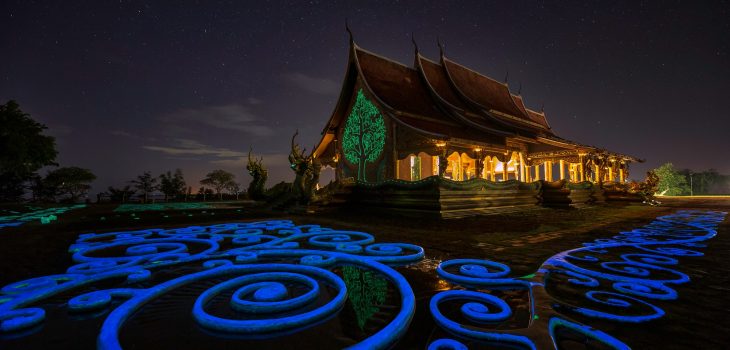

Street art goes beyond schemes and beaten paths. Currently in use are original, unusual solutions, which grab the attention of spectators. Phosphorescent paints are in the lead here. What makes them stand our are their expressiveness and unique appearance. Their biggest advantage is… glowing in the dark. Developers, investors and individuals – sellers and artists – use them. Imagination is their only limit. How do phosphorescent paints work? How to use them? What is essential to know about them?
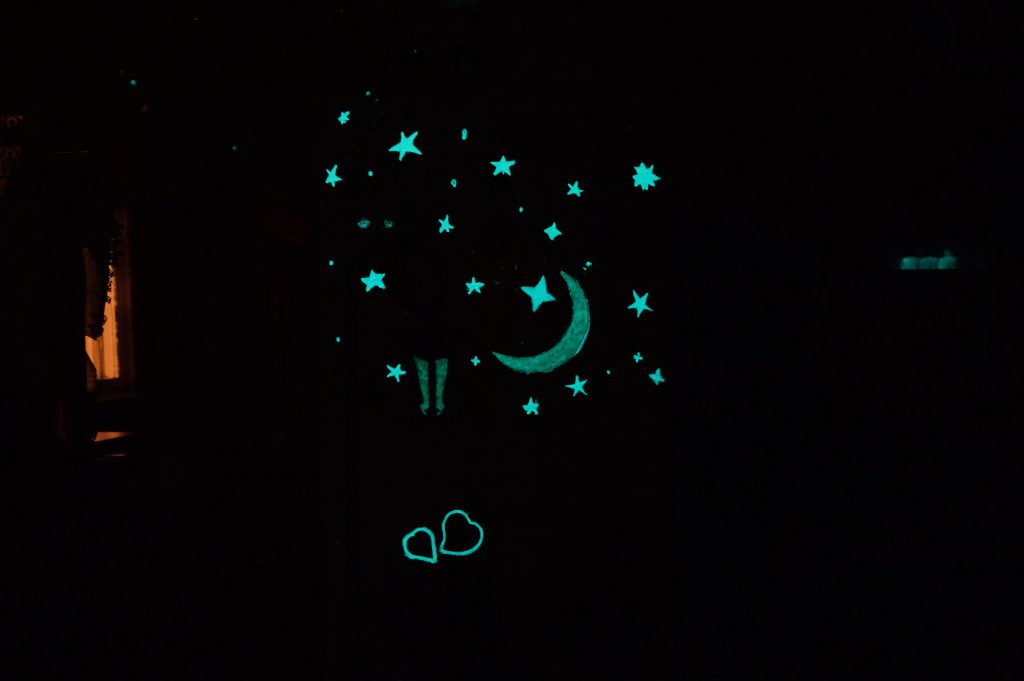
Phosphorescent paints – what are they and how do they work?
Phosphorescent paints, also called photoluminescent (even though it is a broader term, which also includes fluorescence) capture, then accumulate UV radiation from the daylight. Such accumulated radiation is later being slowly released, which gives off the glow-in-the-dark effect. A high quality phosphorescent paint is clearly visible in dark places, and glowing itself lasts up to even 10 hours. Photoluminescent paints are completely safe, non-toxic and do not constitute any hazard.
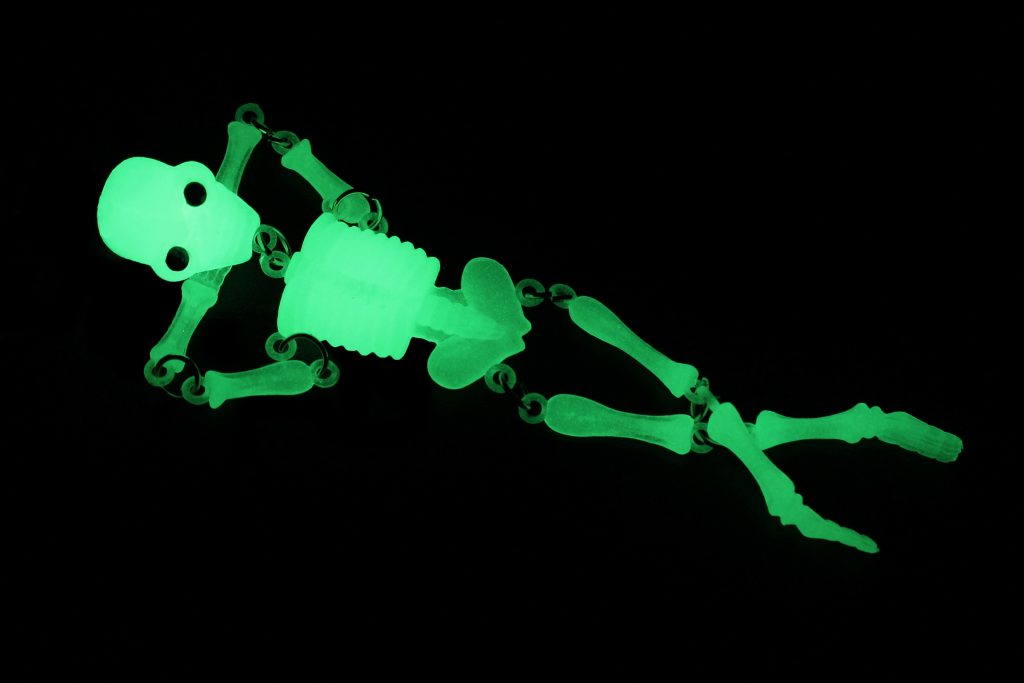

Fluorescent vs. phosphorescent paints – what are the differences?
Concepts of „fluorescent paints” and „phosphorescent paints” should not be confused (even though both belong to luminescent paints) because obtaining glow effect depends on different mechanisms of action.
The first ones convert ultraviolet radiation into bright visible light in real-time, therefore it becomes visible for the human eye only during the activity of an exciting factor. As soon as fluorescent paints gain access to UV radiation (coming from the sun or the ultraviolet lamp), they present neon, vivid, bright colours; however, when the source of adequate light is off, the phenomenon of fluorescence disappears.
In the case of phosphorescent paints, the glowing mechanism is a bit different and is based on accumulation of radiation, and then – releasing it in the dark. Thanks to this, these paints emit glow even after the exciting factor disappears (similarly to the case of fluorescent paints: daylight or UV lamp but also artificial light, which – although to the limited extent – also emits UV radiation).
Summing it up: fluorescent paints glow ONLY DURING the emission of UV radiation, meanwhile phosphorescent paints glow EVEN AFTER the emission of UV radiation stops.
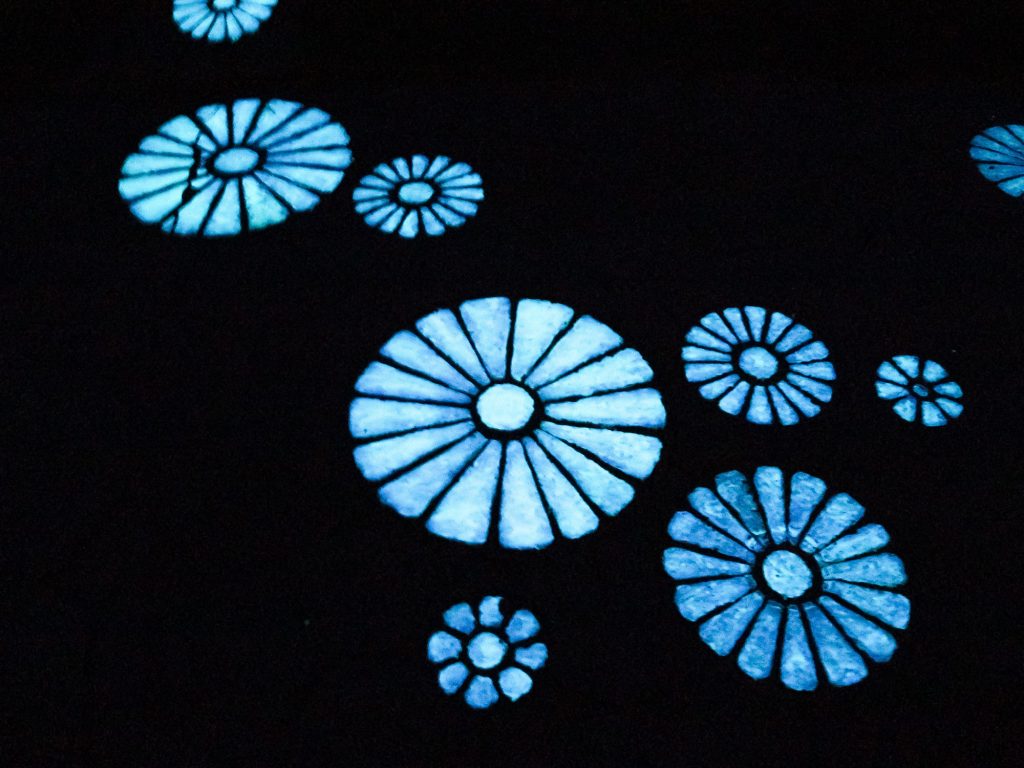

How to use phosphorescent paints?
The application of phosphorescent paints is not difficult and is not significantly different from classic types of paints. Depending on the type of surface or a painted object, various methods can be used. Phosphorescent paint can be applied by using a classic paintbrush, roller, or spray painting gun.
The most recommended, due to the performance and final result, is painting white surfaces. It is worth preparing the base in advance by using a special primer. The best results are also achieved by applying at least 3 thin layers of product. It also worth mentioning that the paint will vary by intensity, depending on the colour.
It is worth mentioning that phosphorescent paints should not be used in rooms which remain well lit almost 24 hours a day, namely – where it is impossible to obtain complete darkness. Only in complete darkness the photoluminescent effect can be fully utilised. When using phosphorescent paints, it should be taken into account that city lighting and street lamps may cause contamination with light, strongly disrupting the effect.


Phosphorescent paints – application
Thanks to their unique effect, phosphorescent paints have been used in many fields. They are very common in construction. The city by night is illuminated by many light sources, e.g. phosphorescent paints, which can be found on road signs, elements of pavements, building facades, walls or ornaments.
And yet, because of much stronger and more expressive effects, phosphorescent paints are most often used indoors. They are perfect for painting ceilings or small details in cinemas, clubs, or pubs. They are very often used in advertising and marketing – they perfectly accentuate nighttime displays or outdoor advertisements, they are also used in printing.
Without a doubt, with their originality and expressiveness, they attract the attention of passers-by, i.e. potential customers. Another field which willingly took phosphorescent paints, is the automotive industry – they are not only used in decorating tuned cars, but also in decorations or at shows.
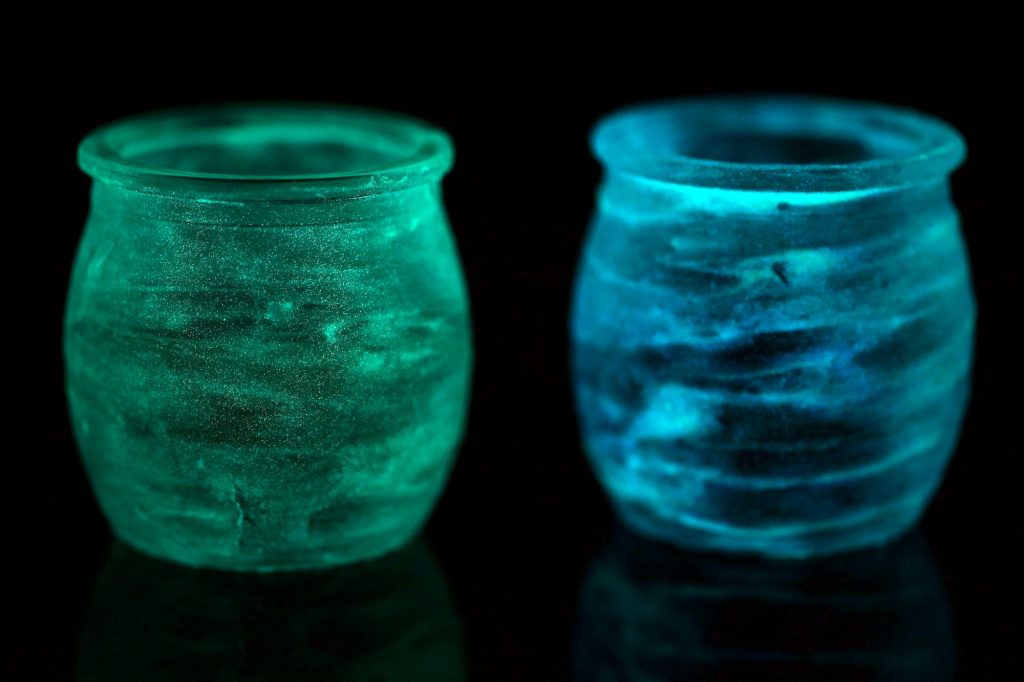

Which phosphorescent paints to choose?
At times, a wide availability of various types of phosphorescent paints brings confusion. When buying one, it is worth paying attention to several most important properties. How to choose good phosphorescent paints?


What distinguishes high-quality phosphorescent paints?
High-quality phosphorescent paints are, primarily, lasting. They stand out with their impressive longevity – on average, from 10 to 15 years. The glow, after proper irradiation, lasts up to 10 hours, which is enough for a whole night.
Good paints are also about strong, expressive colour, which is intensive in complete darkness and visibly glows in the dark. SPLinx offers an entire range of phosphorescent paints, and adds documentation to each sold product – material safety datasheets, technical datasheets, certificates which not only confirm the highest quality, but also contain a lot of valuable information about the properties.


Which types of phosphorescent paints are available?
A whole colour palette is available, which makes the effects even more visually interesting. The most popular are phosphorescent paints in green, yellow, blue, red, orange, and purple. The products can be divided, depending on application, into: phosphorescent paints for indoor use, outdoor use, as well as for specific materials, e.g. for wood, metal, or car bodies.
In stores, available are products for painting with spray painting gun, roller, paintbrush, or water-based products. The most popular are solvent-less acrylic paints. For special tasks, polyurethane-based and epoxy phosphorescent paints are recommended.
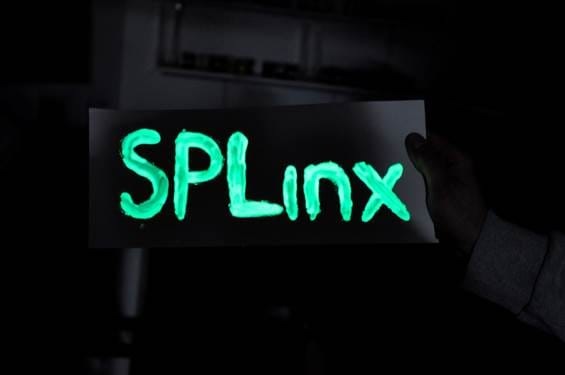

We help you choose a product!
We are here to help you choose a special ink/paint or varnish for your specific project!
Tailor-made products are our specialty.



